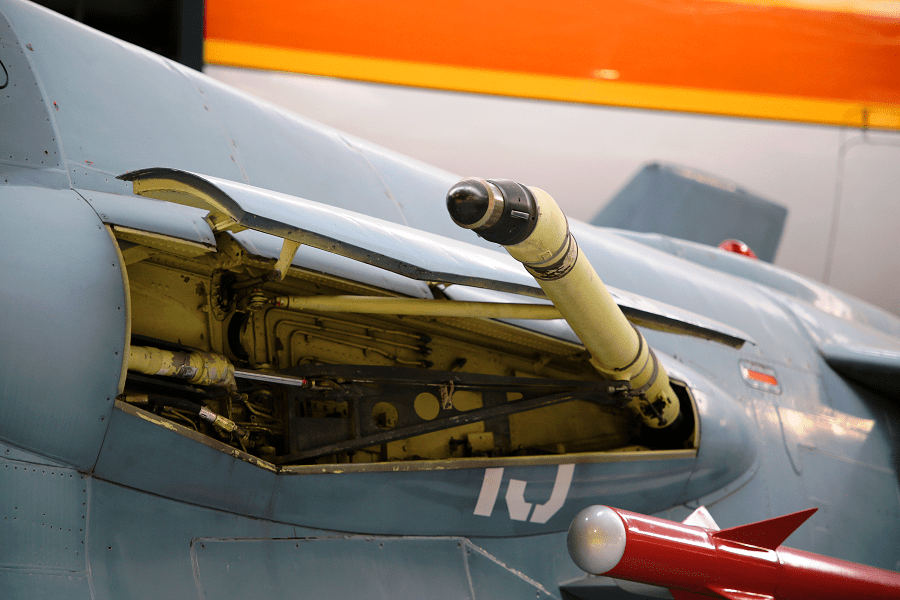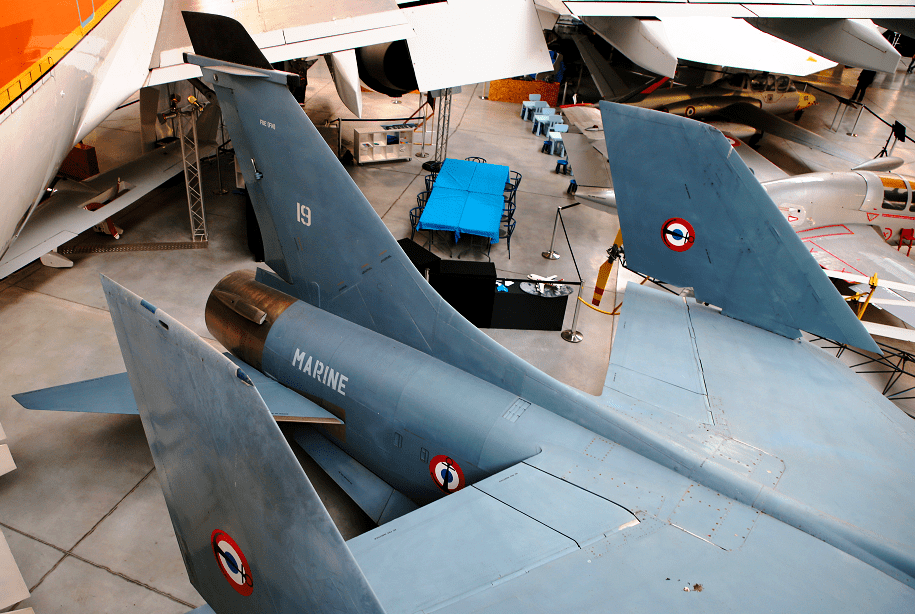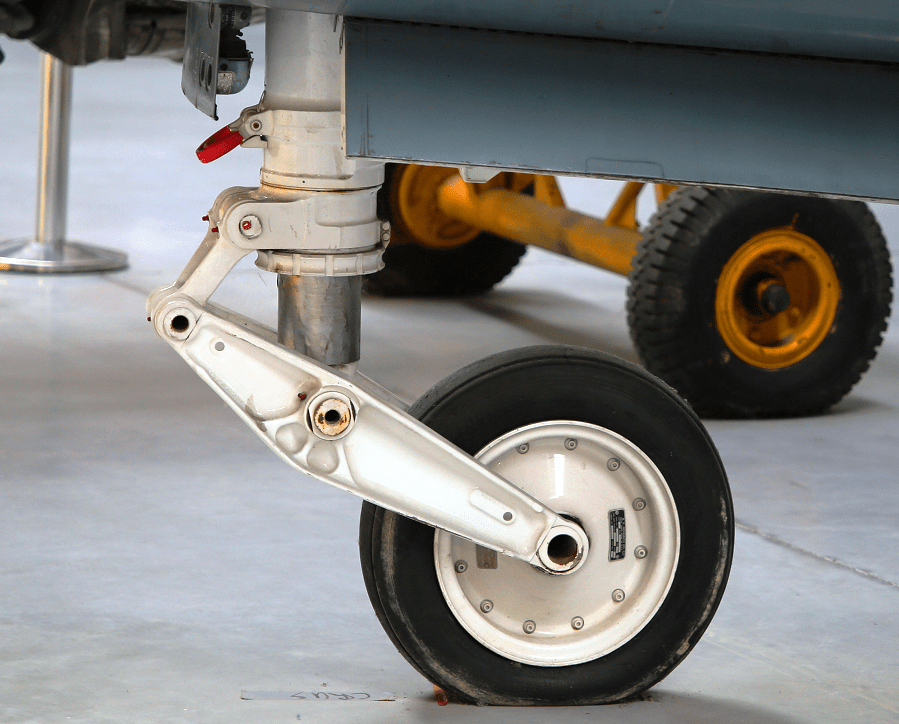Vought F-8E (FN) Crusader: American fighter
In September 1952, the United States Navy announced a requirement for a new fighter. It was to have a top speed of Mach 1.2 at 30,000 ft (9,144.0 m) with a climb rate of 25,000 ft/min (127.0 m/s), and a landing speed of no more than 100 mph (160 km/h).
Korean War experience had demonstrated that 50 caliber (12.7 mm) machine guns were no longer sufficient and as a result the new fighter was to carry a 20 mm (0.79 in) cannon. 4×20 mm had become Navy standard prior to the Korean war: F2H, F9F, F3D and also the F7U and F4D, among others, preceded the F8U. In response, the Vought team led by John Russell Clark, created the V-383.
Unusual for a fighter, the aircraft had a high-mounted wing which necessitated the use of a fuselage-mounted short and light landing gear. The major contribution to the short main gear, however, was the variable incidence wing that meant the plane did not take off and land extremely nose up, which was a characteristic of swept and low aspect ratio winged fighters.
The Crusader was powered by a Pratt & Whitney J57 turbojet engine. The engine was equipped with an afterburner which, on the initial production F8U-1 aircraft, increased the thrust of the engine from 10,200 lb to 16,000 lb, but, unlike later engines, had no intermediate thrust settings. The Crusader was the first jet fighter in US service to reach 1,000 mph; U.S. Navy pilot R.W. Windsor reached 1,015 mph on a flight in 1956.
Made in USA
First flight: 1955
Engine: Pratt & Whitney J57 P20A
Speed: 2125 km/h (1150 knots)
Range: 1350 km (840 nmi)
Ceiling: 15240 m (50,000 ft)
Weight: 6400 kg
Vought was the name of several related American aerospace firms. These have included, in the past, Lewis and Vought Corporation, Chance Vought, Vought-Sikorsky, LTV Aerospace (part of Ling-Temco-Vought), Vought Aircraft Companies, and Vought Aircraft Industries.
The first incarnation of Vought was established by Chance M. Vought and Birdseye Lewis in 1917. In 1928, it was acquired by United Aircraft and Transport Corporation, which a few years later became United Aircraft Corporation; this was the first of many reorganizations and buyouts. During the 1920s and 1930s, Vought Aircraft and Chance Vought specialized in carrier-based aircraft for the United States Navy, by far its biggest customer. Chance Vought produced thousands of planes during World War II, including the F4U Corsair.
Vought became independent again in 1954, and was purchased by Ling-Temco-Vought (LTV) in 1961. The company designed and produced a variety of planes and missiles throughout the Cold War. Vought was sold from LTV and owned in various degrees by the Carlyle Group and Northrop Grumman in the early 1990s. It was then fully bought by Carlyle, renamed Vought Aircraft Industries, with headquarters in Dallas, Texas. In June 2010, the Carlyle Group sold Vought to the Triumph Group.















